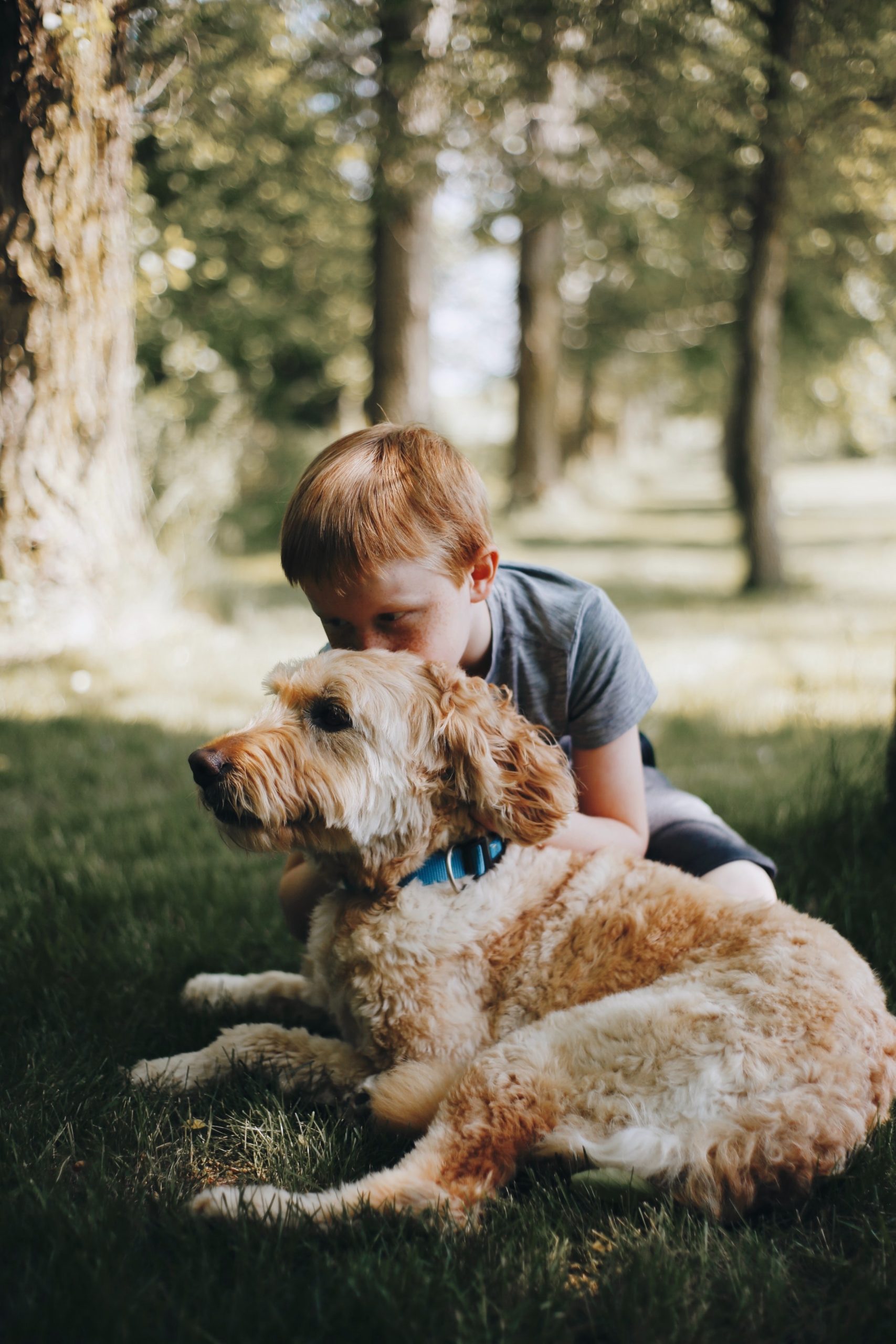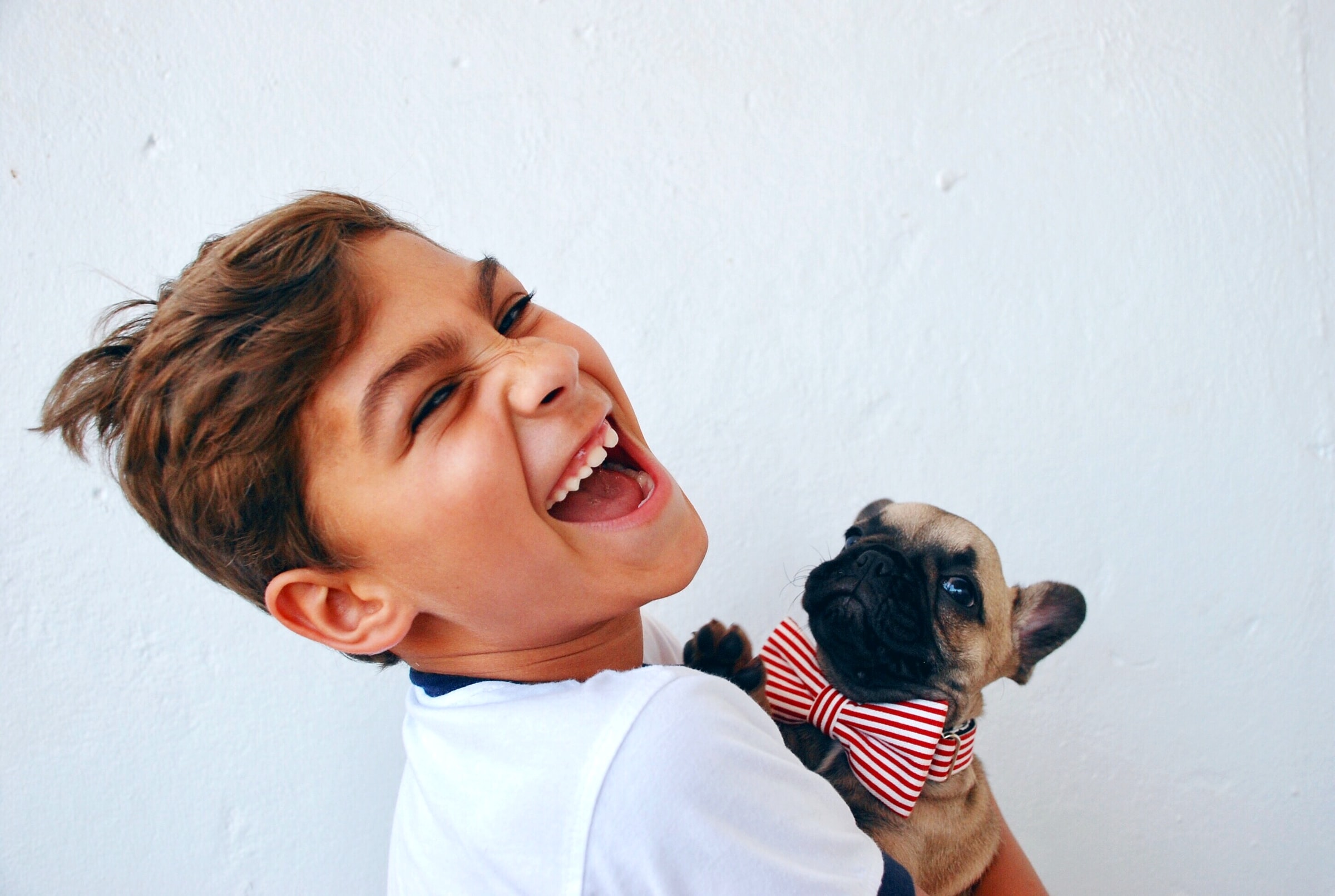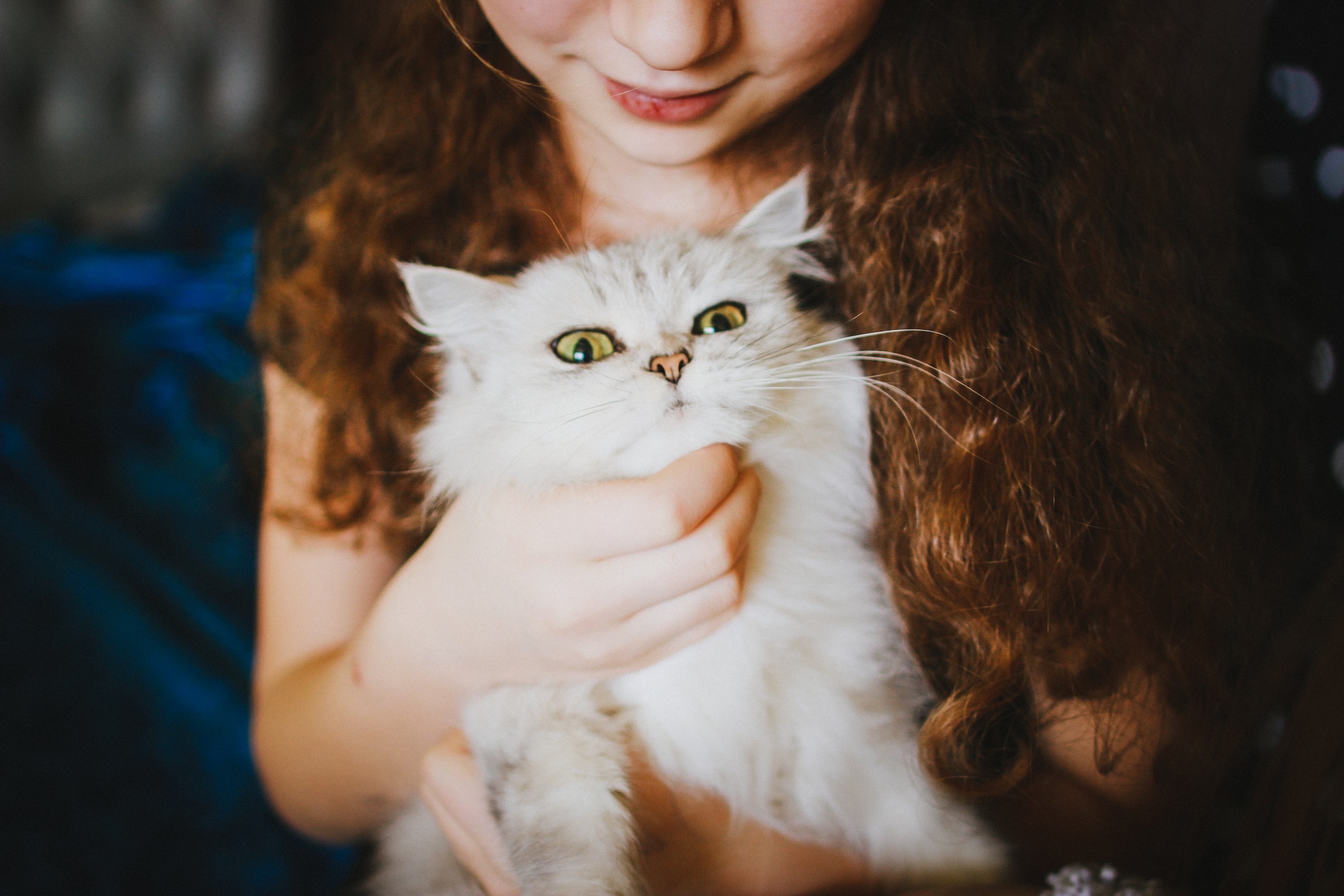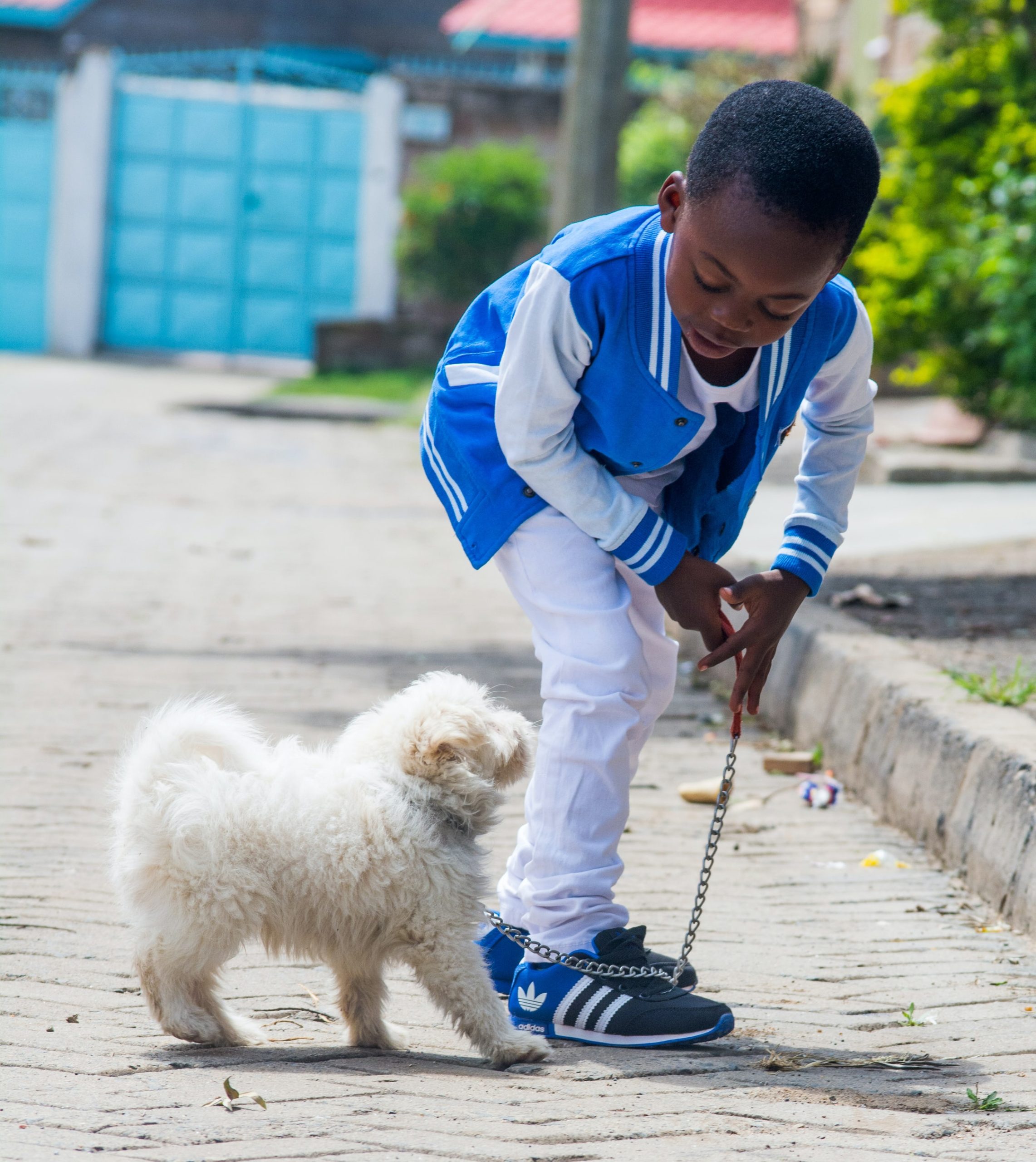
Children tend to ask for a pet from a young age. This is a decision that should be carefully considered. There are advantages and disadvantages to adopting a pet. So, without further ado, let’s dive into this blog and learn some of the reasons why or why not to get your kid(s) a pet.
Pets: a real companion for kids

Studies have shown that the presence of a dog, a cat, or any other animal has many benefits for children. For toddlers, animals are great playmates. They can play together throughout the day. This physical activity stimulates gross motor skills and cognitive functions in kids. It’s also a great way to prevent screen addiction in toddlers.
Furthermore, the presence of a pet at home greatly reassures children. Little ones feel less alone! They can interact with the animal through specific gestures or languages. Thanks to this special bond, the child has less difficulty creating social links later on, especially with his classmates.
According to scientific studies, a pet’s presence would benefit the psychological well-being of kids. The daily contact brings joy to the little ones. They are generally in a good mood and calmer. Moreover, the pet can become a real emotional support for the children in difficult moments: illness, loneliness, problems of socialization at school, anxiety, light depression…
In short, adopting a pet into a home seems like a very good idea. It should be noted that dogs are the perfect companions for toddlers. Choose breeds with a good character (calm, gentle, and easy to train) to facilitate cohabitation. The child will also be safe. If you wish to adopt a dog, it is wise to take a training course.
The objective is to facilitate the training of the animal at home. Not a dog lover? Then cats, turtles, goldfish, birds, and even rodents are excellent pets. The choice is yours. However, it should be noted that each animal has specific traits. You must take this into account to facilitate future cohabitation. Don’t hesitate to ask the child’s opinion when choosing the right pet to welcome into your home.
Pets: an additional responsibility for children

Adopting a pet means responsibility. The child must be fully aware of this. Indeed, a pet has specific needs to fulfill: feeding, setting up a suitable living environment, hygiene, grooming, health, going outside… In short, it is not a simple toy! Before adopting a pet, discussing responsibilities with your child is a good idea. Besides, the toddler must take part in the tasks! From this point of view, adopting a pet helps make a child more responsible towards others. He becomes more mature. Besides, it’s a great way to prepare the child to face life!
It’s true that pets can get into trouble at home, such as damaging valuable objects. So be prepared and be tolerant. In fact, statistics show that the rate of pet abandonment in the United States increases considerably every year. This kind of situation is particularly unfortunate! Moreover, the act is punishable by law. Before adopting a pet, take the time to weigh the pros and cons. In case the responsibilities are too great, it is better to wait until the child is old enough to take full care of it.
What are the benefits of having a pet for children?

For example, having a dog or cat in the home can stimulate a baby’s gross motor skills, as they may want to follow the animal when it moves. Similarly, a toddler’s language is practiced when he or she calls and talks to the animal. From the age of 2, children can play with a cat or dog under close adult supervision.
These animals can be an exciting play partners. For example, the toddler can have fun running errands with his dog or playing with his cat using an adapted and safe toy. The animal can also become the child’s main confidant in difficult or happy moments. It is to him that he will share his sorrows as well as his joys.
The interactions that a toddler has with his pet are also an important source of learning. Indeed, the child must learn to approach and gently caress his animal and to respect it. Unlike a stuffed animal, a live animal does not always want to play when the child wants to. If a toddler pulls his cat’s tail, the cat will let him know that he doesn’t appreciate it. Likewise, a dog will make it clear that it doesn’t want to be disturbed when eating.
Sound off in the comments section below and tell us what you want to read next and if you want to read more about pets.





